Markets World | Introduced 1963 | |
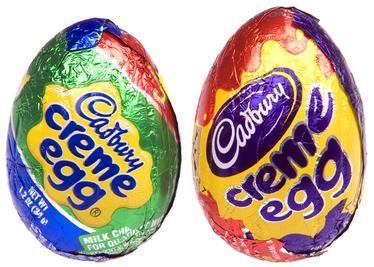 | ||
Similar Twirl, Cadbury Buttons, Creme Egg Twisted, Cadbury Roses, Curly Wurly | ||
Giant cadbury creme egg
A Cadbury Creme Egg is a chocolate product produced in the shape of an egg. The product consists of a thick chocolate shell, housing a white and yellow fondant filling which mimics the albumen and yolk of a chicken egg. The Creme eggs used to have a milk chocolate shell until Kraft foods purchased Cadbury in 2010 and decided to switch as a cost saving measure. The Creme Eggs are the best selling confectionery item between New Year's Day and Easter in the UK, with annual sales in excess of 200 million and a brand value of approximately £55 million.
Contents
- Giant cadbury creme egg
- How to make homemade cadbury creme eggs just add sugar
- Packaging
- Availability
- Manufacture in New Zealand
- Manufacturing process
- Varieties
- Changes to product
- Advertising
- References
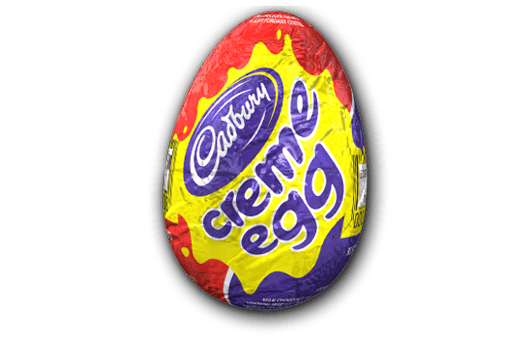
Creme Eggs are produced by Cadbury UK in the United Kingdom and by Cadbury Adams in Canada. They are sold by Mondelēz International in all markets except the US, where the Hershey Company has the local marketing rights. At the Bournville factory in Birmingham, in the UK, they are manufactured at a rate of 1.5 million per day. The Creme Egg was also previously manufactured in New Zealand but, since 2009, they are imported from the UK.
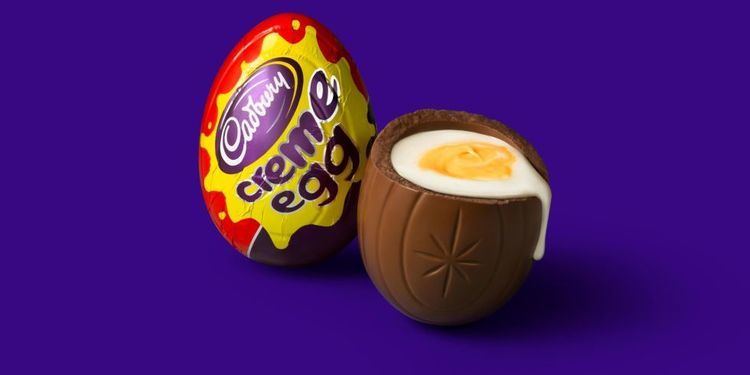
While filled eggs were first manufactured by the Cadbury Brothers in 1923, the Creme Egg in its current form was introduced in 1963. Initially sold as Fry's Creme Eggs (incorporating the Fry's brand), they were renamed "Cadbury's Creme Eggs" in 1971.
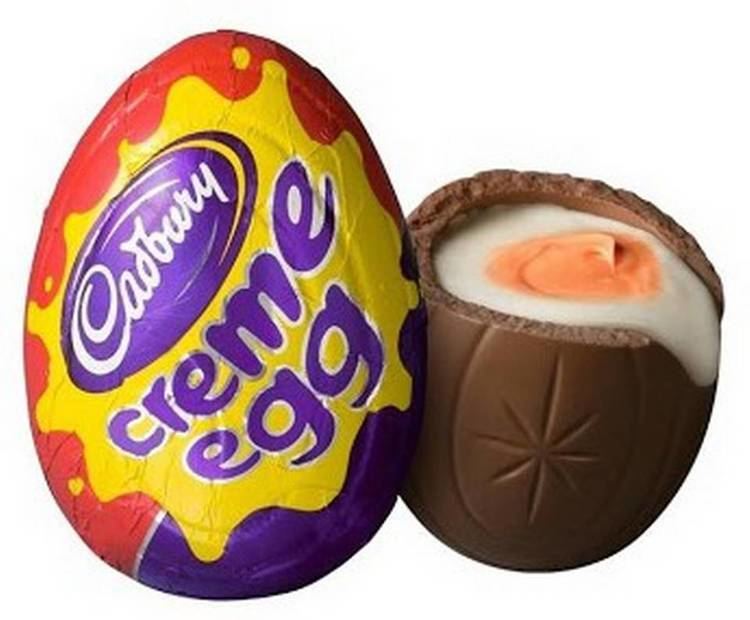
How to make homemade cadbury creme eggs just add sugar
Packaging
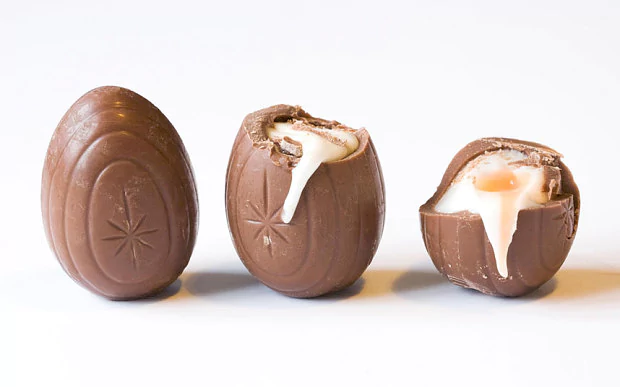
Creme eggs are usually sold individually but are also available in boxes containing a varying quantity of eggs depending on the country the packaging is intended for. The foil wrapping of the eggs was traditionally green, red, yellow and blue in colour in the United Kingdom and Ireland, though green was removed and purple replaced blue early in the 21st century. In the United States, some green is incorporated into the design, which previously featured the product's mascot—the Creme Egg Chick. As of 2015, the packaging in Canada has turned into a 34g, purple, red and yellow soft plastic shell.
Availability

Creme eggs are available annually between 1 January and Easter Day. In the UK in the 1980s, Cadbury made Creme Eggs available year-round but sales dropped and they returned to seasonal availability.
Manufacture in New Zealand
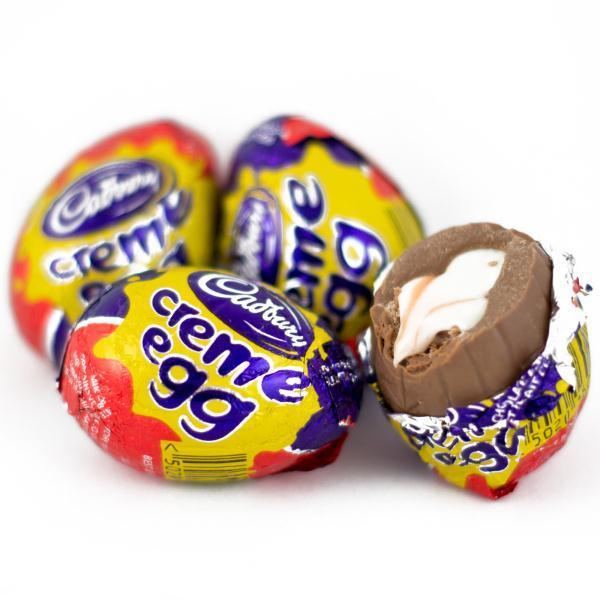
Creme Eggs were manufactured in New Zealand at the Cadbury factory in Dunedin from 1983 to 2009. Cadbury in New Zealand and Australia went through a restructuring process which most Cadbury products previously produced in New Zealand being manufactured instead at Cadbury factories in Australia. The Dunedin plant later received a $69 million upgrade to specialise in boxed products such as Cadbury Roses, and Creme Eggs were no longer produced there. The result of the changes meant that Creme Eggs were instead imported from the United Kingdom. The change has also seen the range of Creme Eggs available for sale decreased. The size also dropped from 40g to 39g in this time. The response from New Zealanders has not been positive. Complaints have included the filling not being as runny as the New Zealand version.
Manufacturing process
Cadbury Creme Eggs are manufactured as two half-egg chocolate shells, each of which is filled with a white fondant, then topped with a smaller amount of yellow fondant. Both halves are then quickly joined together and cooled, the chocolate bonding together in the process. The solid eggs are removed from the moulds and wrapped in foil. The filling, to be more precise, is inverted sugar syrup, produced by processing the fondant with invertase.
Varieties
Over the years, Cadbury has introduced a number of products related to the original Creme Egg, including:
Changes to product
During an interview a 2007 episode of Late Night with Conan O'Brien, actor B. J. Novak drew attention to the fact that American market Cadbury Creme Eggs had decreased in size, despite the official Cadbury website stating otherwise. American Creme Eggs at the time weighed 34 g and contained 150 calories. Before 2006, the eggs marketed by Hershey were identical to the UK version, weighing 39 g and containing 170 calories.
In 2015, the British Cadbury company under the American Mondelēz International conglomerate announced that it had changed the formula of the Cadbury Creme Egg by replacing its Cadbury Dairy Milk chocolate with "standard cocoa mix chocolate". It had also reduced the packaging from 6 eggs to 5 with a less than proportionate decrease in price. This resulted in a large number of complaints from consumers. Analysts IRI found that Cadbury lost more than $12 million in Creme Egg sales in the UK.
Advertising
The Creme Egg has been marketed in the UK and Ireland with the question "How do you eat yours?" and in New Zealand with the slogan "Don't get caught with egg on your face". Australia and New Zealand have also used a variation of the UK question, using the slogan "How do you do it?" Over the years, there have been several major Cadbury's Creme Egg campaigns.
In North America, Creme Eggs are advertised on television with a small white rabbit called the Cadbury Bunny (alluding to the Easter Bunny) which clucks like a chicken. Ads for caramel eggs use a larger gold-coloured rabbit which also clucks, and chocolate eggs use a large brown rabbit which clucks in a deep voice. The advertisements use the slogan "Nobunny knows Easter better than him", spoken by TV personality Mason Adams. The ads have continued to air nearly unchanged into the high definition era, though currently the ad image is slightly zoomed to fill the screen. The majority of rabbits used in the Cadbury commercials are Flemish Giants.
In the UK, around the year 2000, selected stores were provided stand alone paperboard cutouts of something resembling a "love tester". The shopper would press a button in the centre and a "spinner" (a series of LED lights) would select at random a way of eating the Creme Egg, e.g. "with chips". These were withdrawn within a year. There are also the "Creme Egg Cars" which are, as the name suggest, ovular vehicles painted to look like Creme Eggs. They are driven to various places to advertise the eggs but are based mainly at the Cadbury factory in Bournville. Five "Creme Egg Cars" were built from Bedford Rascal chassis. The headlights are taken from a Citroën 2CV.
For the 2009 season, advertising in the UK, Ireland, Australia, New Zealand and Canada consisted of stopmotion adverts in the "Release the Goo" campaign which comprised a Creme Egg stripping itself of its wrapper and then breaking its own shell, usually with household appliances and equipment, while making various 'goo' sounds, and a 'relieved' noise when finally able to break its shell. The Cadbury's Creme Egg website featured games where the player had to prevent the egg from finding a way to release its goo.
A similar advertising campaign in 2010 featured animated Creme Eggs destroying themselves in large numbers, such as gathering together at a cinema before bombarding into each other to release all of the eggs' goo, and another which featured eggs being destroyed by mouse traps.
In 2012, Cadbury parodied the Olympic Games by using Creme Eggs instead of athletes. The first advert was 31 seconds long and consists of an Opening Ceremony, performed by stripped and packed Creme Eggs. Each other advert contained a Creme Egg trying to ‘release the goo’ whilst in an Olympic event. An online game was created by Cadbury, so the public could play the ‘Goo Games’. Six events were available to play and each of them was shown as a cartoon sketch.
In 2016, Cadbury opened a pop-up Creme Egg café titled "Crème de la Creme Egg Café" in London. Tickets for the café sold out within an hour of being published online. The café in Greek Street, Soho, was open every Friday, Saturday, Sunday from January 22, 2016 to March 6, 2016
